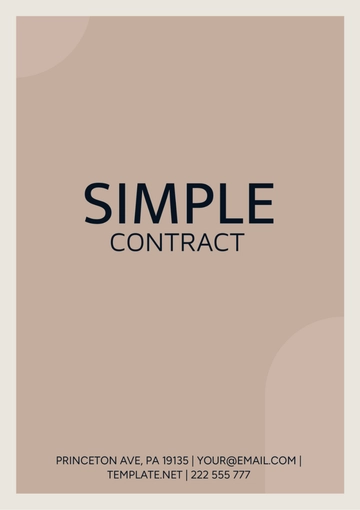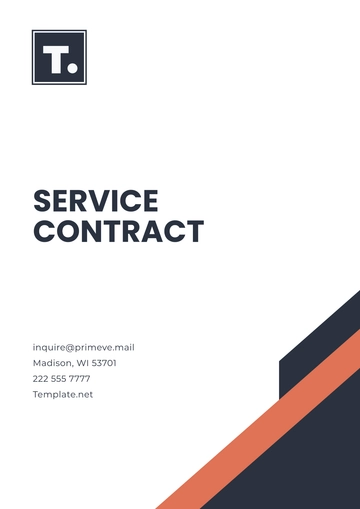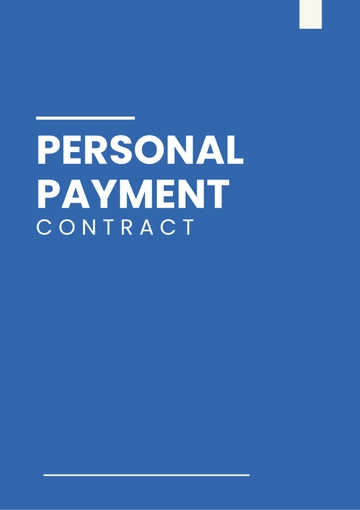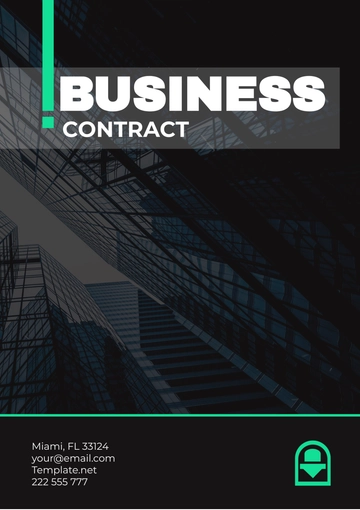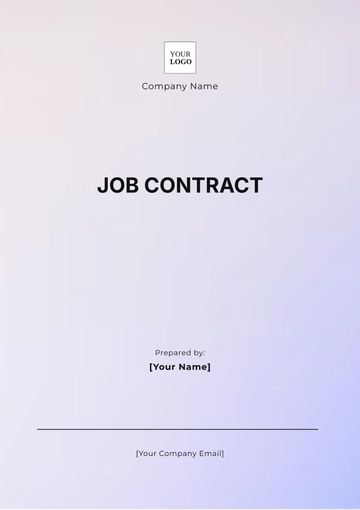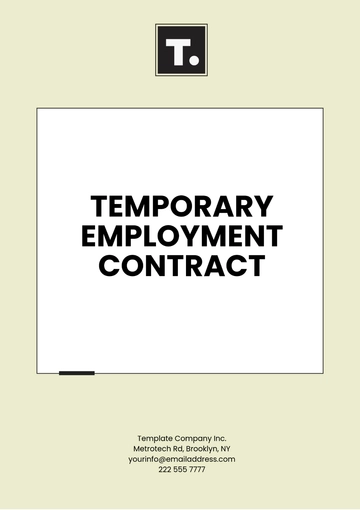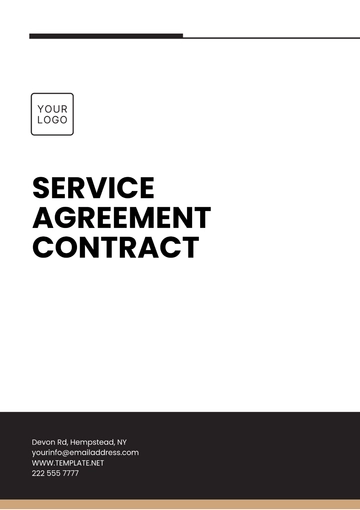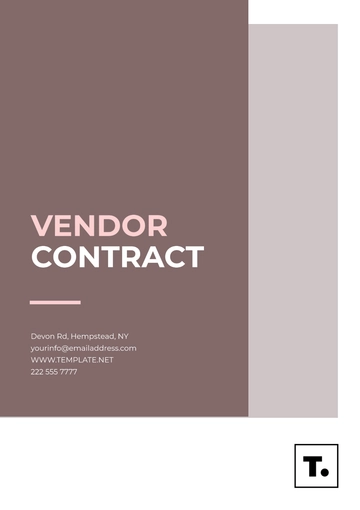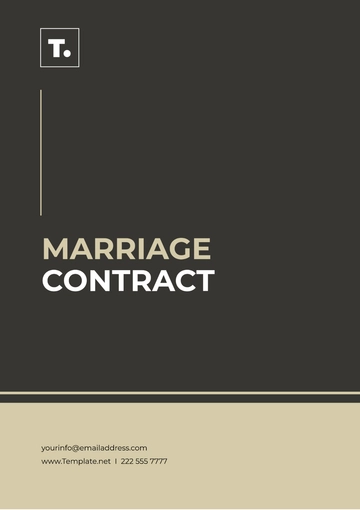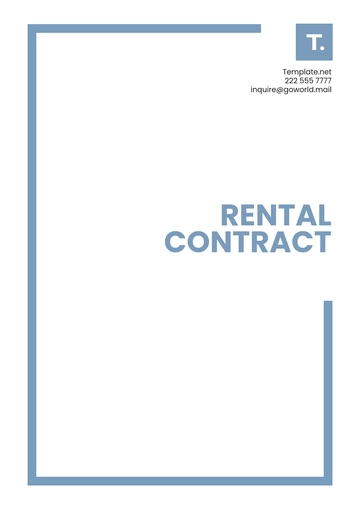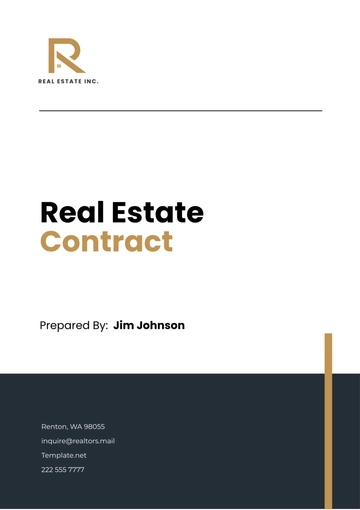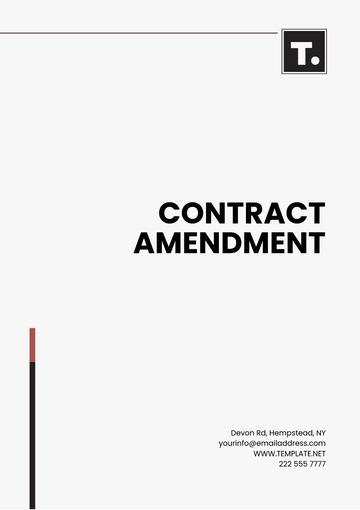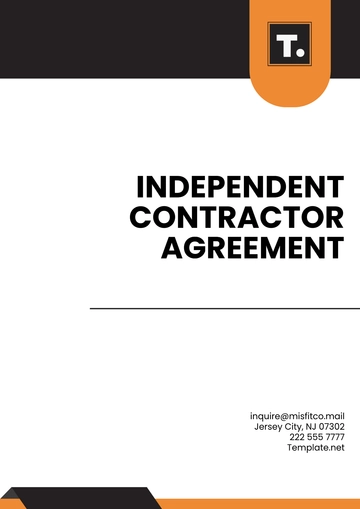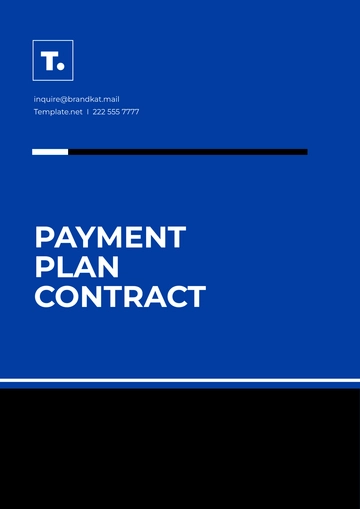Free Sales Guide on Contract Renewals & Extensions

I. Introduction to Contract Renewals and Extensions
The business world is as much about securing new contracts as it is about nurturing the existing ones. A study from the Harvard Business Review points out that increasing customer retention rates by just 5% can lead to profit increases ranging from 25% to 95%. This underscores the profound importance of contract renewals and extensions. Such renewals are not mere bureaucratic procedures but are moments of truth that define the trust and value a company offers. In the notable case of [Case Name], a leading software solutions provider, strategic renewal approaches led to a 30% rise in their year-on-year revenue, turning around their business from a phase of stagnation. Drawing insights from such success stories and underpinned by empirical research, this introduction delves deep into the world of contract renewals and extensions.
A. Purpose and Scope of the Guide
The Sales Guide on Contract Renewals & Extensions you will delve into is not just another manual. It combines years of industry insights, best practices, and hard-learned lessons. You'll find within these pages, strategies that are both time-tested and innovative. It provides a holistic view, catering to professionals from diverse business backgrounds - whether you're a seasoned manager overseeing multiple contracts or a budding executive taking the first steps in client management.
B. Significance of Effective Renewal Strategies
Every time a contract is renewed, it's a testament to the trust, value, and consistent performance a company has showcased. Beyond the obvious financial benefits, renewals are milestones in long-term client relationships. Research by the [Institute Name] found that clients who have renewed contracts thrice or more are 60% more likely to advocate for the company, transforming from mere customers to brand ambassadors. Moreover, the cost of acquiring a new customer can be five times more than retaining an existing one. In business stability, consistent renewals provide a predictable revenue stream, enabling better financial forecasting and business growth. This guide sheds light on how to capitalize on these moments, ensuring that contract renewals become significant milestones in your company's growth narrative.
II. Preparing for Renewals and Extensions
In the world of business, every contract expiration is a crossroad; one path leads to a continued, prosperous partnership, while the other, potentially, to a missed opportunity. Much like a meticulous architect who reviews blueprints before renovating a structure, successful contract renewals require a detailed examination of the existing framework. Insights from Fortune 500 companies indicate that nearly 70% of failed renewal negotiations stem from inadequate preparation. Hence, this section of the guide is committed to illuminating the nuances of effective preparation that sets the stage for favorable renewals and extensions.
A. Contract Review and Assessment
Navigating the intricate fabric of a contract might seem daunting. However, in reality, it's a structured endeavor aimed at understanding and analyzing past engagements. The renowned "Larson's Contract Analysis Report of 2022" emphasized the significance of dissecting terms and conditions, suggesting that companies who did so were 45% more successful in their renewal endeavors. Additionally, revisiting the performance history clarifies the accomplishments and potential bottlenecks faced during the contract's tenure. This proactive review can greatly influence how negotiations are framed by highlighting successes and addressing any concerns head-on. By the end of this subsection, you'll be equipped with a clear roadmap to undertake an exhaustive review, ensuring that your negotiations stand on a foundation of facts and proven performance.
B. Client Relationship Evaluation
While contracts might be transactions on paper, they essentially represent relationships. The "Global Business Relations Survey" from 2023 postulated that companies with a strong pulse on client satisfaction boasted an 80% renewal success rate. It's not merely about numbers but understanding client aspirations, challenges, and feedback loops. Is your client's vision aligned with what you've delivered? Have you been proactive in addressing their concerns? And more importantly, where does your service stand in their larger scheme of operations? This subsection delves deep into relationship analytics, providing you with tools and techniques to gauge the health of your client partnerships. Armed with this knowledge, you can tailor your renewal pitch to resonate with client needs, thereby significantly enhancing the probability of a successful extension.
III. Renewal and Extension Strategies
Navigating the intricacies of contract renewals and extensions is akin to playing a strategic board game. Each move, if calculated and well-executed, can lead to a win-win situation for both parties. The contemporary business landscape is rife with examples. For instance, a 2021 study published in the "Journal of Business Strategy" highlighted that top-performing companies attributed 20% of their annual revenue growth to effective renewal strategies. As we delve deeper into this section, you'll gain insights into the amalgamation of analytical thinking and innovative approaches that define successful renewal and extension strategies.
A. Negotiation Techniques
Every negotiation is an opportunity to strengthen the partnership, and the tactics employed can significantly shape the outcome. The famous "Harvard Negotiation Project" has long emphasized the importance of understanding mutual interests and crafting solutions that cater to both parties. Here, we'll dissect some of the most potent negotiation techniques:
Pricing Adjustments: Adopting a flexible pricing approach can be beneficial. For example, the "Tech Titans Survey" in 2022 showcased how a tiered pricing model, adjusted based on contract duration, led to a 35% increase in long-term contract renewals.
Value-Added Services: Offering additional services without a cost implication can set you apart. Global logistics firm, [Logistics Firm Name] for instance, started providing in-depth analytics as a complimentary service, leading to a 40% rise in contract extensions.
Contract Term Modifications: Sometimes, adjusting the contract duration or providing early-exit clauses can boost trust levels. A noteworthy instance is the [Case Name] case where introducing flexible contract terms saw a 50% reduction in client hesitations during renewals.
B. Identifying Upsell and Cross-Sell Opportunities
The renewal phase is more than just continuation; it's an avenue for growth. As per the "Sales Expansion Report 2023", companies that integrated upselling and cross-selling into their renewal conversations saw a 30% uptick in contract value.
Spotting Gaps: Begin by assessing the client's existing solutions and identifying what complementary services or products they might need. For example, if a client has purchased a software suite, perhaps they might benefit from a premium support package.
Client Feedback Analysis: Regular feedback not only aids in service improvement but can highlight areas where clients seek more. [Software Firm Name] a software company, capitalized on client feedback to introduce two new service modules, leading to a substantial increase in upsell rates.
Bundling: Offering products or services as bundles can create a perceived value proposition. The strategy of "Buy Two, Get One Free" is not just limited to retail but can be innovatively applied to B2B scenarios to entice clients into exploring additional services.
In conclusion, the journey of contract renewals and extensions is an exciting blend of strategy and relationship management. With the right approach, it can lead to enhanced partnerships and greater business growth.
IV. Contract Renewal Execution
The orchestra of contract renewals and extensions is not just about crafting the right strategy but also executing it flawlessly. The heart of any successful renewal lies in the details and the precision with which they're addressed. A report published in the "Global Business Contracts Journal" in 2022 emphasized that 60% of unsuccessful contract renewals resulted from poor execution rather than unfavorable terms. This chapter ensures that each phase of your renewal execution is impeccable, setting the stage for a seamless transition into the next contractual period.
A. Renewal Process Workflow
An organized renewal process is more than just a formality; it's the crux of successful execution. Adopting a meticulous approach ensures no stone is left unturned:
Initiation & Communication: Start with an official communication, perhaps referencing past successes and shared ventures. For instance, global telecom leader [Telecom Name] always sends a personalized video message detailing collaborative achievements before commencing renewal talks.
Documentation Review: Before entering negotiations, reviewing the previous contract's documents is paramount. This involves assessing past deliverables, performance metrics, and any other specific terms that were integral.
Negotiation: With thorough groundwork, step into the negotiation phase. As "Law & Business Review 2023" suggests, successful negotiations are less about 'winning' and more about 'aligning' interests.
Contract Finalization: Upon reaching a consensus, draft the renewed contract precisely, ensuring clarity in terms and conditions.
Follow-up: Post-signing, conduct a review meeting to clarify any doubts. This is also an opportune time to foster goodwill, perhaps by introducing loyalty benefits or offering periodic performance check-ins.
B. Handling Objections and Concerns
A crucial facet of renewals is addressing concerns with grace and tact:
Active Listening: Before formulating a response, understand the client's perspective thoroughly. "Navigating Business Relationships," a popular course at [School Name] emphasizes the importance of active listening in conflict resolution.
Problem-Solving Approach: Adopt a solution-oriented mindset. If a client cites cost concerns, perhaps showcase the long-term value or offer a phased payment plan.
Feedback Incorporation: When clients raise concerns, they often provide implicit feedback. [Agritech Company Name] an agritech company, turned a major contract objection into an innovative product feature, exemplifying how feedback can fuel growth.
Third-party Mediation: In rare cases where an impasse is reached, considering a neutral third-party mediator can be beneficial. This ensures that decisions are made objectively, keeping the partnership's best interests at heart.
In essence, contract renewal execution is a dance that requires agility, understanding, and finesse. With a clear workflow and adept handling of objections, renewing contracts can transition from a routine process to a strategic victory.
V. Legal and Compliance Considerations
In the complex arena of contract renewals and extensions, the importance of legal and compliance considerations cannot be understated. Adherence to these guidelines not only safeguards against potential legal pitfalls but also bolsters an organization's reputation as trustworthy and diligent. According to a 2022 study by "Contractual Insights Monthly," businesses prioritizing legal and compliance factors during renewals experienced 35% fewer disputes. With this framework, we aim to ensure that your renewal process is both legally sound and ethically impeccable.
A. Legal Compliance
Ensuring contract renewals and extensions are in complete harmony with the prevailing legal landscape is fundamental:
Staying Updated: Laws and regulations evolve, sometimes rapidly. Engage with legal experts or employ tools like [Tool Name], a fictional software that provides real-time legal updates pertinent to your industry.
Checklist Creation: Develop a comprehensive legal checklist tailored to your sector. This should encompass local, state, and federal regulations. For instance, a tech company must consider intellectual property laws, while a healthcare provider might focus on patient rights and data security.
Third-party Review: Even with meticulous in-house checks, having an external legal counsel review contracts is a wise strategy. Firms like [Firm Name] offer specialized reviews for contract renewals, ensuring an added layer of scrutiny.
B. Data Privacy and Confidentiality
In today's digital age, data breaches and information leaks can spell disaster, both in terms of finances and reputation:
Robust Data Management Systems: Invest in secure and reputable data management platforms, such as [Platform Name], to ensure client data is stored, processed, and accessed securely.
Regular Audits: Periodically conduct internal and external audits to ascertain compliance with data privacy standards. [Audit Firm Name], an audit firm, found that businesses conducting bi-annual data audits faced 40% fewer breaches.
Training and Awareness: Ensure all team members are aware of and trained in data confidentiality protocols. Workshops led by experts from institutions like the [Institution Name] can be instrumental in reinforcing best practices.
Transparency with Clients: Always be transparent with clients about data usage, storage, and sharing protocols. This not only establishes trust but can also act as a deterrent against potential mishandling.
In conclusion, the intertwining of contract renewals with legal and compliance considerations creates a roadmap that, when followed diligently, leads to smoother negotiations, reduced risks, and fortified relationships. Adhering to this guide ensures that your contract renewals aren't just legally compliant and reflect a commitment to the highest standards of integrity and professionalism.
VI. Client Retention and Relationship Building
Delving into the dynamics of client retention and relationship-building, it's pivotal to recognize that the journey with a client doesn't culminate at the point of contract renewal. Instead, it's akin to securing a foundation stone upon which the edifice of long-lasting partnerships is built. As the renowned business analyst Laura Stevens stated in her [Year] keynote at the "Global Business Relationships Summit," "A renewed contract is a renewed commitment. And every commitment demands nurturing." Within this section, we aim to empower you with strategies to not merely retain clients but to evolve with them, forging partnerships that stand the test of time.
A. Post-Renewal Relationship Building
Securing a renewed contract is analogous to achieving a milestone in a marathon. The race, however, continues
Client Appreciation Initiatives: Recognize and celebrate the renewal milestone. Organize appreciation events, possibly through firms like [Firm Name], known for curating experiences that resonate with clients, making them feel valued.
Regular Check-ins: Establish a bi-monthly or quarterly check-in schedule. Firms like [Firm Name] offer software solutions that prompt relationship managers to engage clients regularly, ensuring you stay top-of-mind.
Collaborative Projects: Engage clients in collaborative endeavors. It could be a CSR activity, a webinar, or a co-hosted event, fostering a sense of partnership beyond vendor-client dynamics.
B. Feedback and Continuous Improvement
Harnessing feedback isn't just about identifying areas of improvement; it's about signaling to clients that their voice matters.
Feedback Platforms: Implement feedback collection tools like [Platform Name], a platform lauded for its ease of use and comprehensive analytics. Regularly soliciting feedback indicates proactiveness and a genuine intent to better one's offerings.
Feedback Forums: Organize annual or bi-annual forums where clients can directly engage with key stakeholders to voice concerns, suggestions, or appreciation. [Initiative Name] an initiative by leading businesses, showcases how such forums can transform client relationships.
Action on Feedback: Gathering feedback is half the journey. Demonstrating actionable outcomes based on the feedback is crucial. Adopt a "Listen, Act, Inform" model: Listen to feedback, act upon it, and inform the client about the changes implemented.
Action on Feedback: Gathering feedback is half the journey. Demonstrating actionable outcomes based on the feedback is crucial. Adopt a "Listen, Act, Inform" model: Listen to feedback, act upon it, and inform the client about the changes implemented.
- 100% Customizable, free editor
- Access 1 Million+ Templates, photo’s & graphics
- Download or share as a template
- Click and replace photos, graphics, text, backgrounds
- Resize, crop, AI write & more
- Access advanced editor
Easily strategize your sales path with Template.net's Sales Guide on Contract Renewals & Extensions Template. It's fully customizable and editable in our Ai Editor Tool, allowing you to create a personalized approach for every business deal. Enjoy the convenience, practicality, and efficiency of business transactions - it’s a tool designed to help you excel in your market. Experience the difference today!
You may also like
- Rental Contract
- Contractor Contract
- Contract Agreement
- One Page Contract
- School Contract
- Social Media Contract
- Service Contract
- Business Contract
- Restaurant Contract
- Marketing Contract
- Real Estate Contract
- IT Contract
- Cleaning Contract
- Property Contract
- Supplier Contract
- Partnership Contract
- Food Business Contract
- Construction Contract
- Employment Contract
- Investment Contract
- Project Contract
- Payment Contract
- Student Contract
- Travel Agency Contract
- Startup Contract
- Annual Maintenance Contract
- Employee Contract
- Gym Contract
- Event Planning Contract
- Personal Contract
- Nursing Home Contract
- Law Firm Contract
- Work from Home Contract
- Software Development Contract
- Maintenance Contract
- Music Contract
- Amendment Contract
- Band Contract
- DJ Contract
- University Contract
- Salon Contract
- Renovation Contract
- Photography Contract
- Lawn Care Contract
